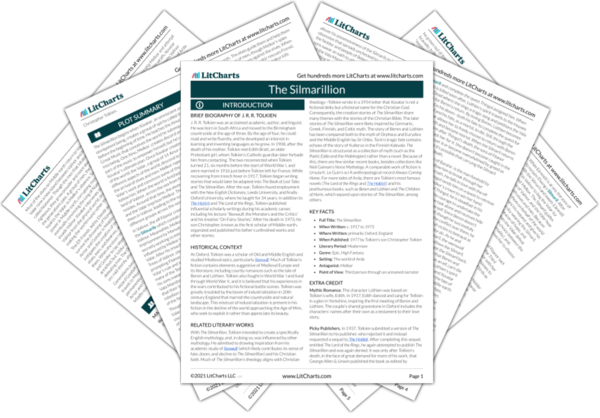Though Maeglin appears helpful and friendly, he is very like his father in his possessiveness. When Idril doesn’t love him in return, he turns to other outlets for his emotion—violence, manipulation, and power-seeking. The elves, considering the story after its completion, call Maeglin’s affection for Idril and subsequent behavior a result of the curse of the Noldor, implying that his actions will lead him to loss and betrayal.
